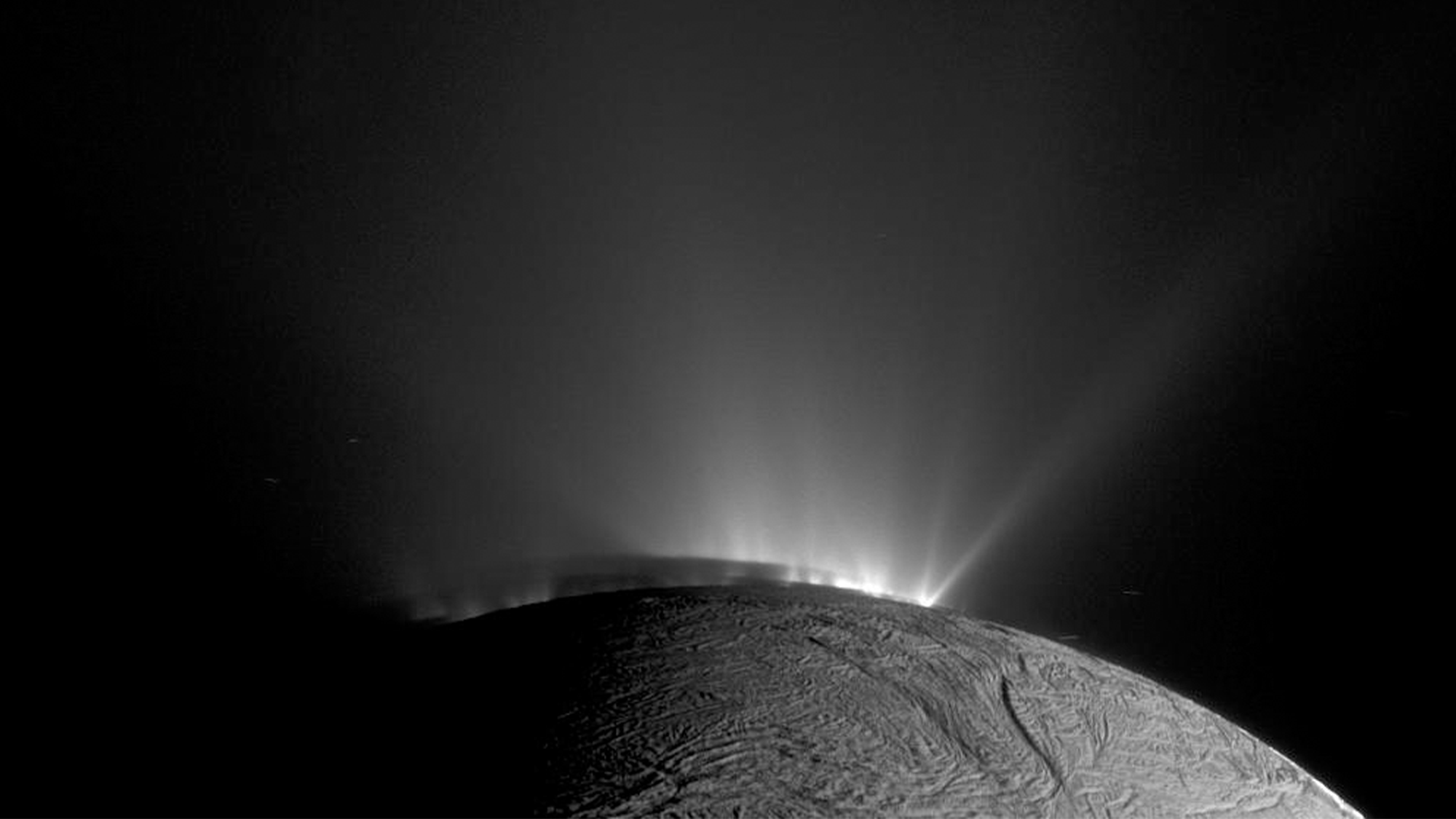

Even six years after its dramatic plunge into Saturn’s atmosphere, NASA’s now complete Cassini mission continues to fuel discovery. Data from the mission recently revealed evidence that the giant plume of water vapor and ice grain spewing from Saturn’s moon Enceladus contains hydrogen cyanide. This linear molecule is key to the origin of life. Cassini found strong confirmation for the molecule and the possibility that the ocean under Enceladus’ icy outer shell holds a powerful source of chemical energy. The findings were published December 14 in Nature Astronomy.
[Related: NASA hopes its snake robot can search for alien life on Saturn’s moon Enceladus.]
In June, a new analysis of Cassini data found that, in theory, Enceladus has all the chemicals it needs to support life within its plume. The ocean under Enceladus likely supplies most of this material for the plume streaming off of the moon. This newly identified energy source also comes in the form of several organic compounds. Some of these compounds serve as fuel for organisms here on Earth. It’s possible that there is more chemical energy inside of this small moon than astronomers previously thought. The more energy, the more likely it would be for the celestial body to sustain life.
“Our work provides further evidence that Enceladus is host to some of the most important molecules for both creating the building blocks of life and for sustaining that life through metabolic reactions,” study co-author and Harvard University doctoral student Jonah Peter said in a statement. “Not only does Enceladus seem to meet the basic requirements for habitability, we now have an idea about how complex biomolecules could form there, and what sort of chemical pathways might be involved.”
The ‘Swiss army knife of amino acid precursors’
Hydrogen cyanide is of the most crucial and versatile molecules needed to form the amino acids needed to sustain life, because its molecules can be stacked together in many different ways. The team on this study calls hydrogen cyanide the “Swiss army knife of amino acid precursors.”
“The discovery of hydrogen cyanide was particularly exciting, because it’s the starting point for most theories on the origin of life,” said Peter. “The more we tried to poke holes in our results by testing alternative models, the stronger the evidence became. Eventually, it became clear that there is no way to match the plume composition without including hydrogen cyanide.”
In 2017, scientists found evidence that Enceladus potentially had chemistry that could help sustain life in its ocean. The combination of hydrogen, methane, and carbon dioxide inside of the plume pointed to a methanogenesis. This metabolic process produces methane and is widespread on Earth. Methanogenesis also may have been critical to the origin of life on our planet.
[Related: Here’s how life on Earth might have formed out of thin air and water.]
The new study found evidence for additional energy chemical sources that produce a process stronger than methanogenesis. Scientists found numerous organic compounds that were oxidized. Oxidation helps drive the release of chemical energy, so the presence of oxidized compounds indicates that there are multiple chemical pathways to potentially sustain life present in Enceladus’ subsurface ocean.
“If methanogenesis is like a small watch battery, in terms of energy, then our results suggest the ocean of Enceladus might offer something more akin to a car battery, capable of providing a large amount of energy to any life that might be present,” study co-author and astrobiologist and planetary scientist at NASA’S Jet Propulsion Laboratory Kevin Hand said in a statement.
How Earth math works on Saturn’s moons
The team also performed a detailed statistical analysis to recreate the conditions that Cassini found on Enceladus. They examined data on the gas, ions, and ice grains around Saturn that Cassini’s ion and neutral mass spectrometer gathered. The statistical models helped the team tease out the small differences in various chemical compounds.
“There are many potential puzzle pieces that can be fit together when trying to match the observed data,” Peter said. “We used math and statistical modeling to figure out which combination of puzzle pieces best matches the plume composition and makes the most of the data, without overinterpreting the limited dataset.”
While determining if life could originate on Enceladus is still a long way off, this new research shows the chemical pathways for life on this Saturnian moon can be tested in the lab on Earth.
